Preston, in Lancashire, is a town that once boasted two gunmakers whose wares appear quite frequently on the vintage market. One is W. Richards, the other is J. Burrow.
Preston, situated north of Liverpool, on the Ribble Estuary, became wealthy through both industry and its activities as a port. The first flush of major wealth came through cotton; the first mill being erected in 1771. By 1835 there were forty.
In 1852 the population was 70,000 strong and both industry and the docks continued to provide wealth and employment. As the 19th century turned into the 20th, steam, then petrol-powered, vehicle workshops began to emerge there, these businesses eventually grew into Leyland Motors. As the cotton trade waned, vehicle manufacture and engineering took over.
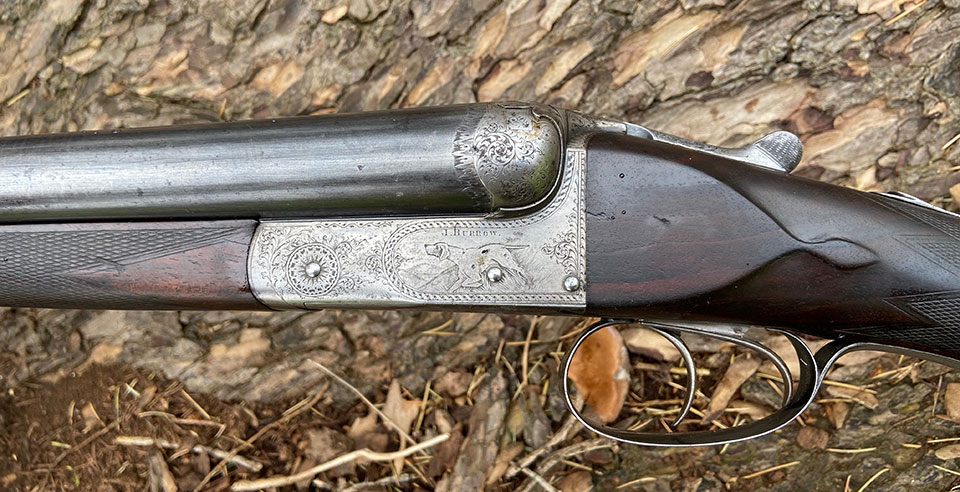
Shooting opportunities were plentiful, with foreshore for wild-fowling and nearby grouse moors, as well as pheasant coverts and arable land for rough shooting. Plenty of activity, it seems for supporting some quality gunmakers. Indeed, even today, Preston is home to several gun shops.
I have owned several guns by J. Burrow over the years and all have been of high quality and displayed good degrees of finish. One that arrived this week is no different.
It is an early twentieth century, live-pigeon trap gun and displays many of the features which became tell-tale signs of the type, as the sport matured in the breech-loader era.
Much like Helice today, live pigeon shooting demanded a gun that was stable and predictable in the hands, as up to 200 birds could be involved in a long competition. It needed to absorb recoil well and be capable of firing quite heavy loads. This one weighs a full eight pounds.
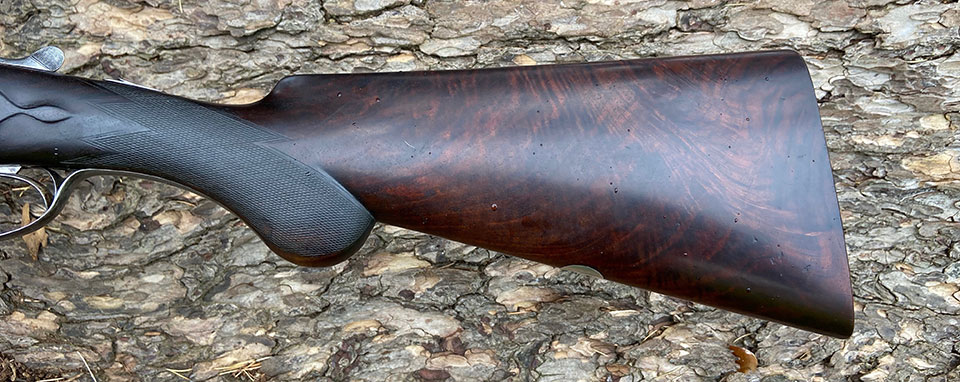
Because of the heavier loads, 2 3/4” chambers were often used in preference to the usual 2 1/2” chambers of British game guns. This gun has 3” chambers, which were initially designed to accommodate the desire to load cartridges with better and deeper wadding, in order to limit shot deformation, rather than to promote very heavy powder and shot charges, as these were limited by club rules for competition.
The Anson & Deeley action is locked by a double Purdey under-bolt with a third bite in the shape of a Scott ‘Improved Bolt’. This is a cross-bolted rib-extension, which operates in the same manner as Greener’s rounded-section cross bolt. Operation is by top-lever. It also has disc-set strikers.
The action has side clips to limit lateral movement and the rib is flat and filed to reduce glare. the bead is ivory and there is an intermediate bead at the half-way point, also of ivory. Chokes are Full and Full.
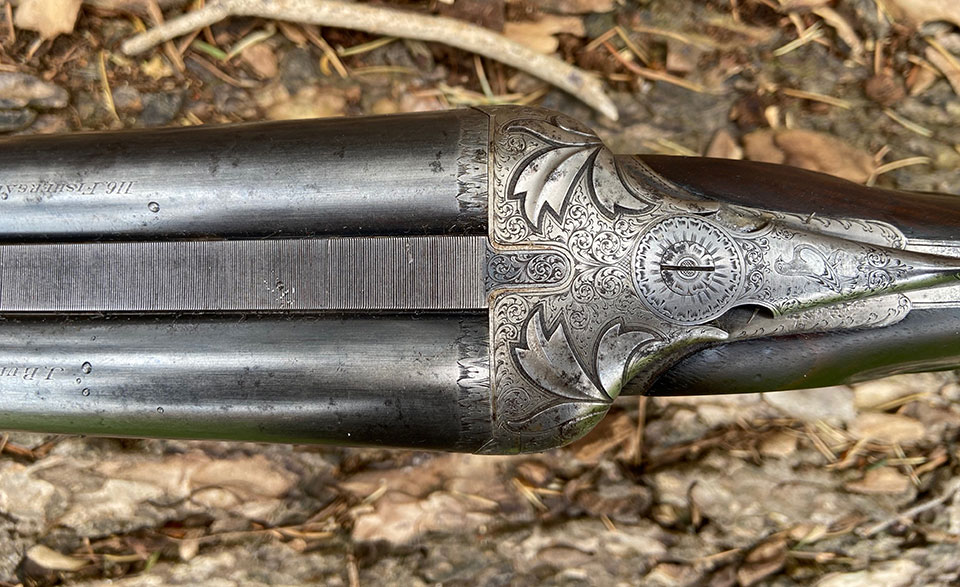
The stock is of semi-pistol grip form with fine chequer and drop-points and is made from a very highly-figured, dark, walnut blank. It appears to have Baker ejectors and the forend it released by means of an inert grip-catch. Build quality throughout is very high and the gun does not appear to have seen a great deal of use.
The serial number is 6616, which, Nigel Brown suggests, indicates a manufacture date between 1894 and 1913, and the 30” steel barrels bear the address ‘116 Fisher Gate Preston’, where the firm traded from 1854 - 1913. The ‘J’ stood for James Burrow and the firm had been in business in Preston since 1817.
Proof marks help date the gun more accurately. The original proof marks are from London. They show ‘CHOKE’, 13/1 as the bore size (which is .719”) and 1 1/4oz, which is the shot load and also denotes a longer chamber. The words ‘NITRO PROOF’ show it was made for the new powders replacing black powder. The arm and scimitar stamp denoting London Nitro Proof was introduced in 1904, so we can be reasonably sure this gun was made between 1904 and 1913. It was re-proofed in Birmingham, with a larger bore size (.729”) after 1954.
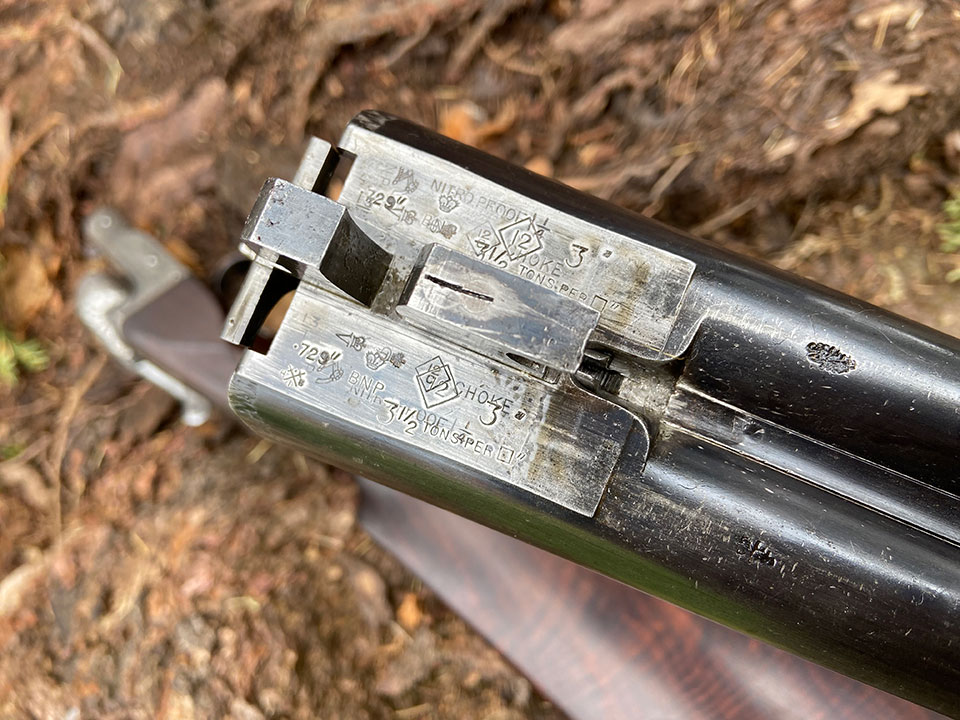
The Burrow was brought to me by a local man who had owned it for many years and was clean and well oiled, though clearly not much used. The little signs we look for were encouraging; pin and screw slots were mostly sharp and clean, chequer has never been re-cut and is all visible, drop points are still quite sharp, wood is undamaged, save for the odd dent and all parts fit into one another nicely without any slack or wear.
There is no sign of any re-finishing or major repair anywhere on the gun; save the fact that it was re-proofed over half a century ago. It will benefit from a little gentle restoration. Barrels need re-blacking, the chequer could be cleaned out and perhaps the stock re-finished. The wood is very well figured but now somewhat dark and not showing its figure as well as it could.
Measuring the bores showed them to be close to the most recent proof sizes and both had walls showing a minimum of forty thou’, which is very good indeed.
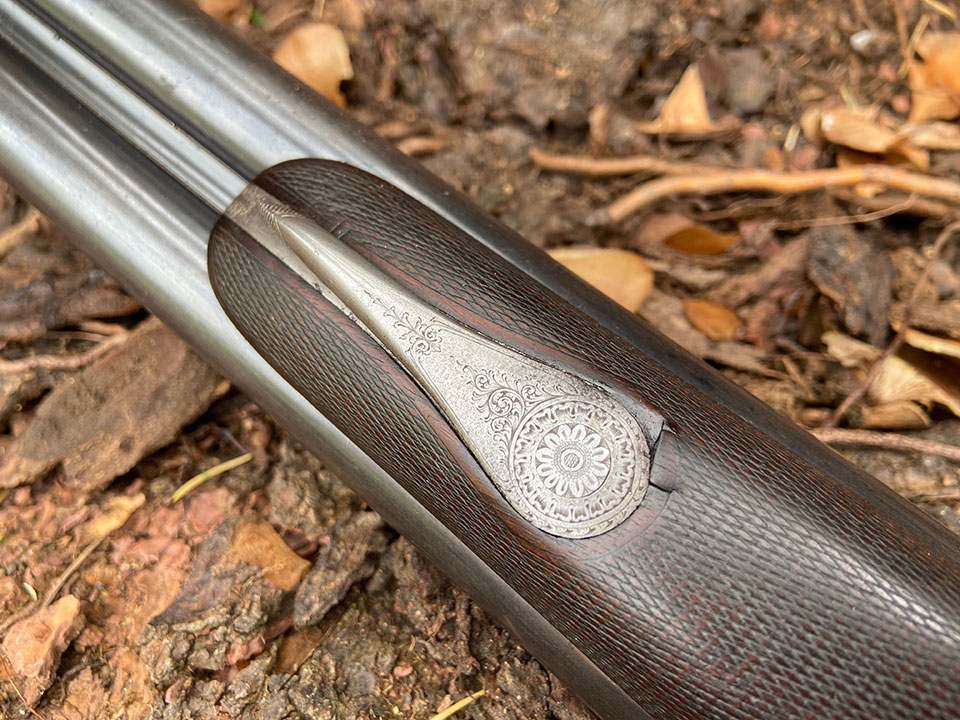
There is much talk at the moment of preparing for the demise of lead as a projectile for shotguns. Steel shot is the cheapest alternative but in order to handle steel shot, barrels on older guns need to be checked carefully and in many cases, altered.
The Burrow has the weight to cope with punchy cartridges, which bodes well. Steel has to be driven faster than lead to help overcome the lighter weight. A steel shot load takes up more space than the same weight of lead, so the long chambers are helpful too. Bores at .729” and .733” are open enough for steel (most makers are producing steel shot suitable barrels on new guns at .732”).
The Full chokes are an issue. To be confident that steel shot will not damage the bores or cause bulges, they will need to be re-cut to Quarter choke, with gradual lead-ins to the choked section. This can be done. Perhaps then, I will have a gun ready to try some Standard Steel in 2 3/4” (70mm) cases, like Gamebore Dark Storm Precision Steel, which is now available with ‘Ecowad’ and in a load designed for guns not bearing the fleur-de-lys steel shot proof test.
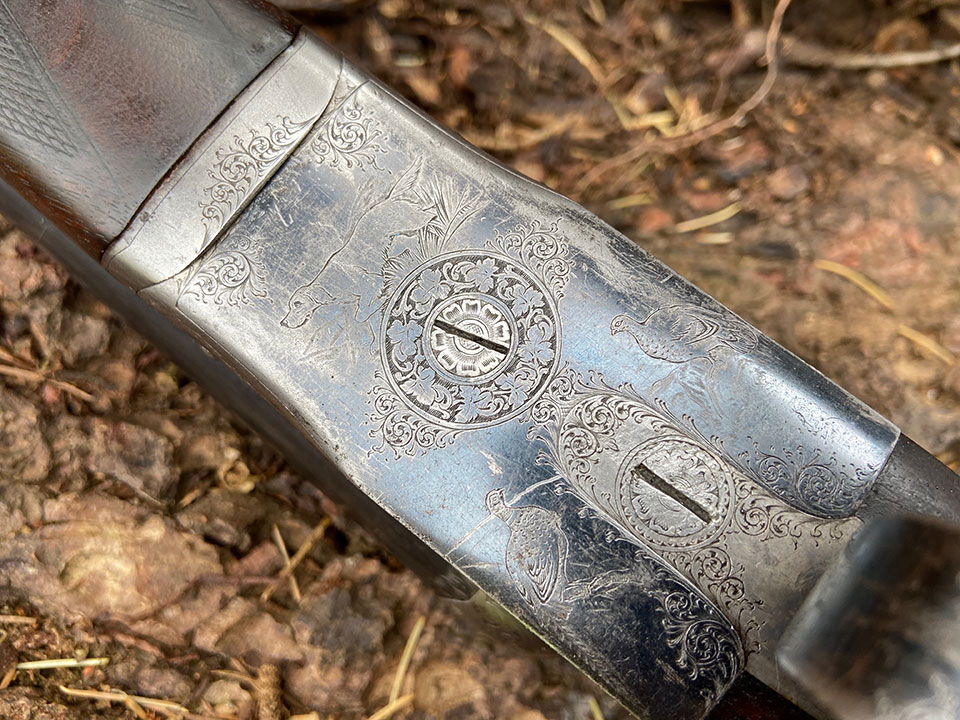
So, perhaps this high quality pigeon gun from Preston is the solution to my quest for a gun to meet the demands of steel shot loads after lead is gone, for the days I don’t want to shell-out for bismuth for my Damascus barrelled hammer guns.
Published by Vintage Guns Ltd on (modified )




